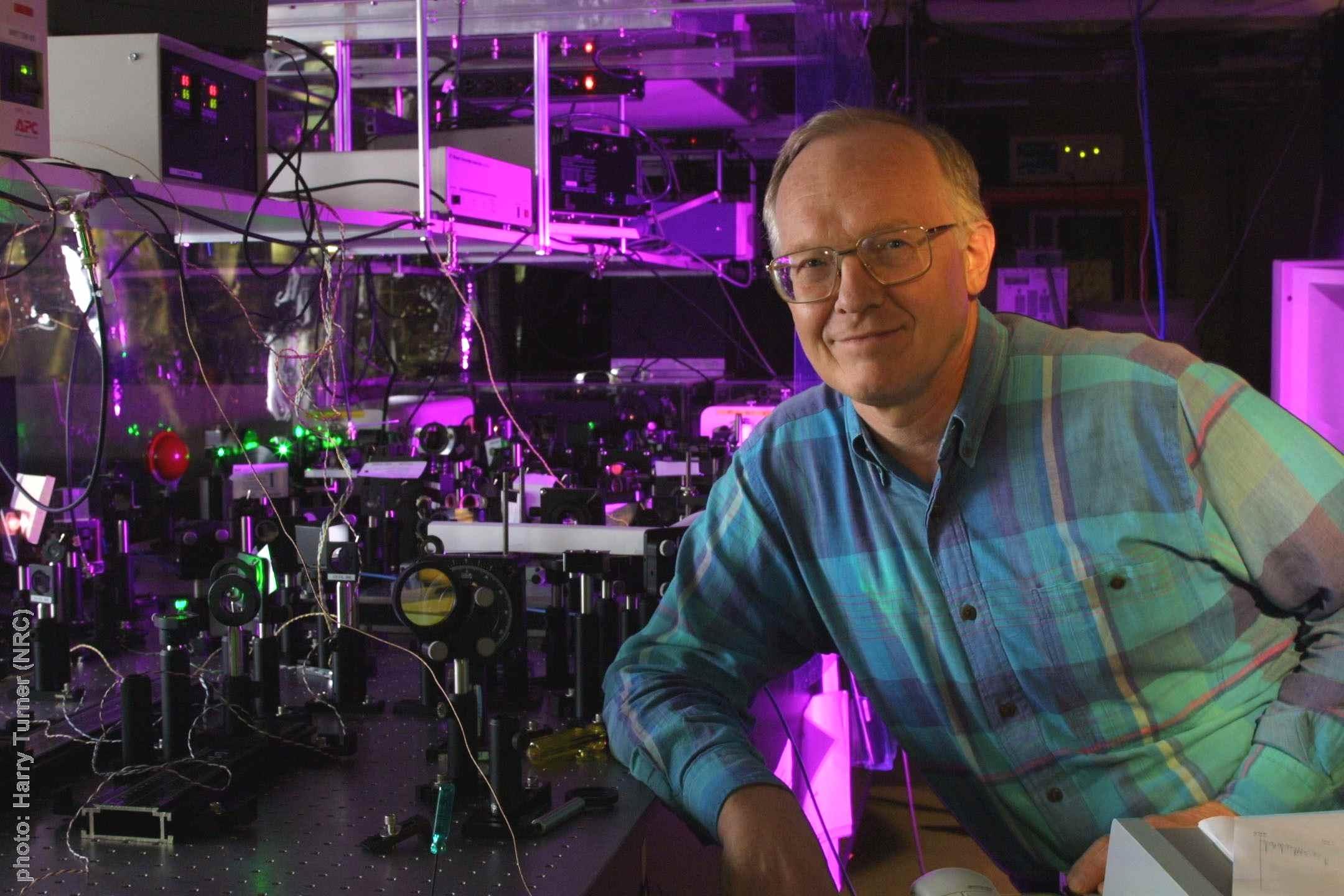In this, the 50th anniversary of the first laser, there is a revolution in the ability to make short flashes of laser light. Currently, the world's shortest light pulses are measured in attoseconds (10-18s) - short enough to freeze the motion of electrons in molecules. The laboratory uses ultrafast laser light to photograph the electrons and atoms in molecules - the first frame in a molecular movie. We are extending this approach to make quantum movies of chemical and biological processes as they occur, giving unprecedented insight into the molecular world.
Dr. Paul Corkum (OC, FRS, FRSC) is senior scientist at the NRC Steacie Institute and director of the Joint Attosecond Science Laboratory (U. Ottawa, NRC). His research focuses on using intense laser pulses to study and control matter. Paul was the first to make and measure attosecond pulses. He is using this new technology to image matter on the attosecond time scale. For this work, he has been honored by many prestigious awards, including the NSERC Herzberg Award (2008), and the American Chemical Society Zewail Prize (2009).
For more information on this public lecture, please contact Dr. David Jones, Department of Physics & Astronomy, University of British Columbia (1-604-822-3853).
 | Dr. Paul Corkum (Joint Attosecond Lab, Steacie Institute for Molecular Sciences and National Research Council, Ottawa, Canada)
|
